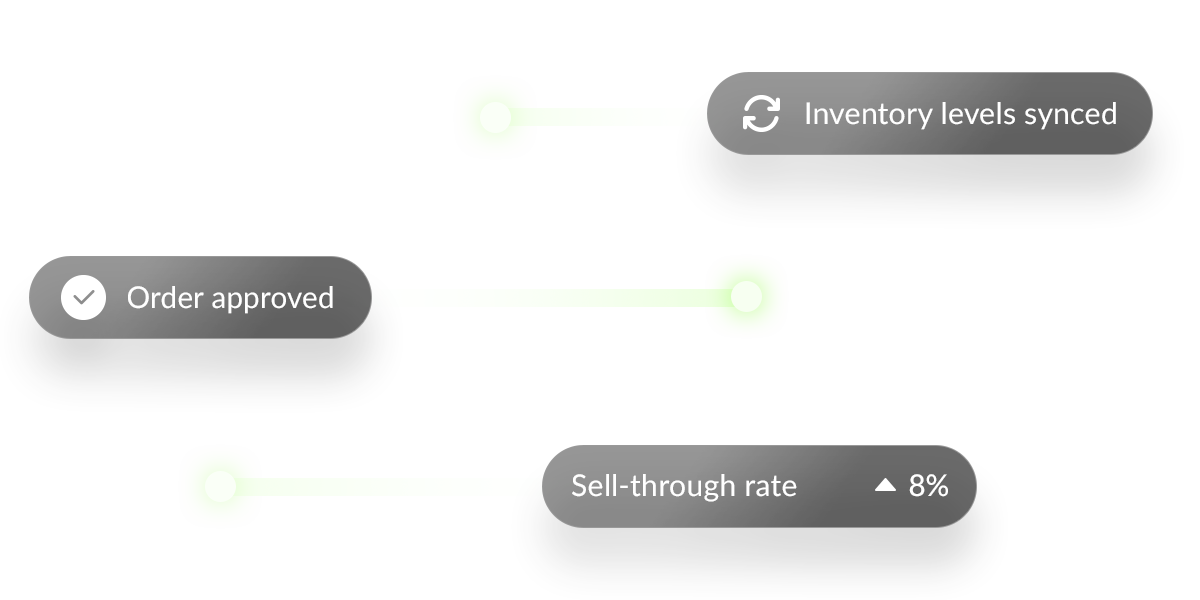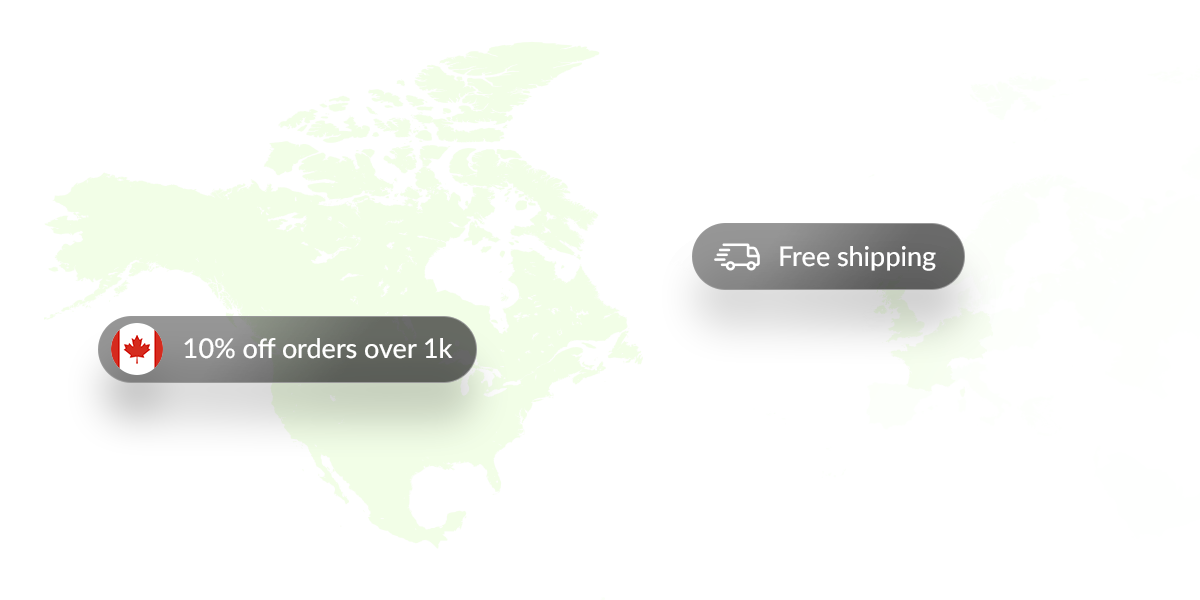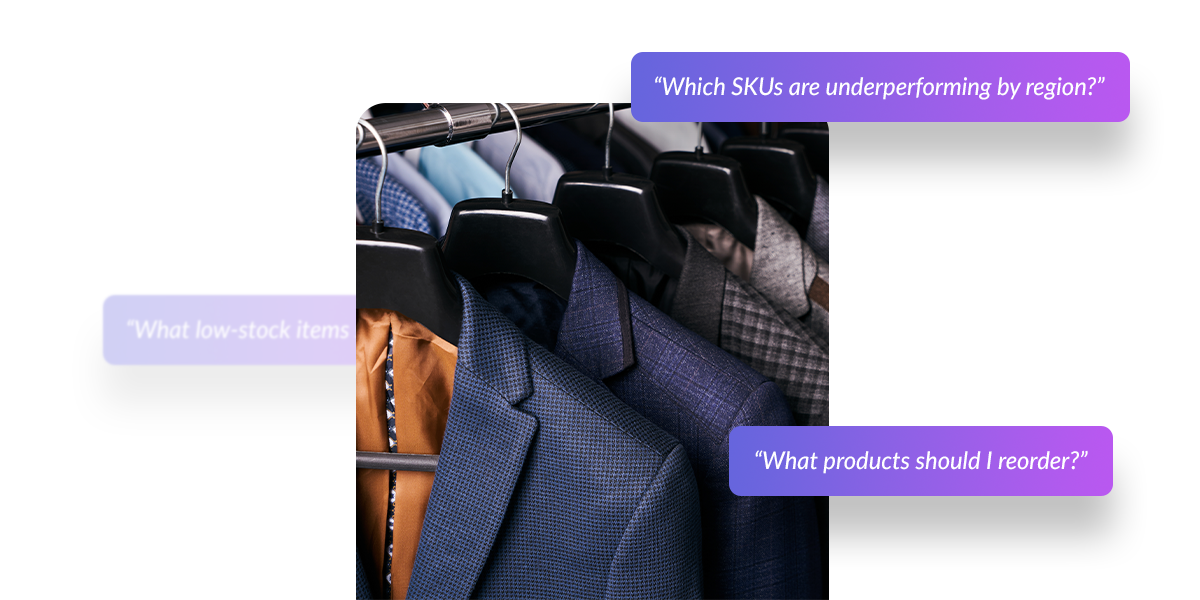Metrics that matter
6 data points changing everything in wholesale
Trends and takeaways to know, backed by real data.
Start scrolling to see our insights and recommendations.


Introduction
Wholesale is undergoing a quiet revolution. DTC costs are climbing, marketplaces are maturing, and brands are seeking stability, profitability, and control. As a result, wholesale has re-emerged as a strategic growth engine, not just a channel for scale, but a foundation for resilience.
The six stats in this guide reflect the key forces reshaping the industry, from operational transformation to smarter digital investment. Whether you're doubling down on strategic retail partnerships, rethinking your B2B tech stack, or looking to deepen your existing wholesale footprint, these insights will guide your next move.
57%
of brands prioritize retail partnerships over geographic expansion.

What it means
Brands are doubling down on trusted retail relationships instead of chasing growth in new or unfamiliar markets. This signals a return to strategic, relationship-based commerce.
Take action
Strengthen your top retail relationships through various modes, such as auditing and doubling down on top-performing retail partners, co-branded campaigns, and enabling better sell-through visibility.
Real-world example
Nike’s renewed focus on key wholesale partners after pulling back from DTC-only strategies shows the value of balanced channel investment.
67%
say B2B eCommerce tools are critical, but only 25% have fully integrated it with ERP systems.

What it means
B2B eCommerce tools are valued but under-leveraged. Manual processes and partial integrations create friction and missed opportunities in wholesale operations.
Take action
Invest in full ERP integration to streamline orders, sync inventory, and unlock real-time forecasting to sell with better confidence. Set up success metrics such as reducing manual processing time, improving accuracy, and speeding up fulfillment times.
Real-world example
Columbia Sportswear made the news for taking strides in integrating and harmonizing its tech stack for wholesale growth by syncing digital assortments and live inventory data across their B2B and ERP systems.
48%
of brands cite wholesale as one of the best paths to profitable growth.

What it means
Wholesale isn’t just a volume play anymore; it’s a profitability engine. Lower acquisition costs and operational efficiencies make it a vital part of the channel mix.
Take action
Reevaluate the role of wholesale within your total channel mix, not just as a fulfillment engine but as a lever for brand positioning and predictable growth. Identify white space in your current retail footprint (regions, categories, etc.) and prioritize thoughtful expansion opportunities.
Real-world example
Gymshark’s move into select retail partnerships (e.g., Selfridges, Dick’s Sporting Goods) highlights wholesale as a curated growth lever.
32%
of brands use marketplaces to support direct-to-retailer sales, not replace them.

What it means
Marketplaces are shifting from being universal sales platforms to strategic support tools that help brands streamline new order inflow and test new product launches without undermining retail partnerships.
Take action
Use marketplaces to complement, not cannibalize, your retail network. Think of them as order enablers, not brand destinations. Use marketplace platforms as a way to reduce overstock, increase discoverability, and test new SKUs.
Real-world example
Premium brands increasingly use digital B2B marketplaces to release limited collections or seasonal capsules to select retailers, driving demand while maintaining control over their core channels. One example is Mandatory CPH, a hybrid trade event and digital marketplace that blends in-person meetings with online ordering, allowing buyers to preview collections and place orders seamlessly before, during, or after the event.
Only 17%
of brands consider dynamic pricing essential.

What it means
Despite its potential, dynamic pricing is still niche. Brands prefer predictability over algorithmic pricing, but this may be a missed opportunity to optimize margins. When done well, data-driven pricing can unlock margin potential and better respond to market shifts.
Take action
Start by using data to inform volume-based or promotional pricing strategies, especially during key seasons. By leveraging analytics, you can test pricing strategies that adapt to inventory surges or lags. Likewise, recognize that wholesale pricing is already dynamic. Volume-based discounts, payment terms, shipping fees, and incentives all contribute to what your buyers perceive as “price.” Reframe dynamic pricing as an evolution of your current model, not a radical departure.
Real-world example
Electronics and CPG brands are leading the way by rolling out AI-based pricing for bulk buyers, to adjust margins dynamically during promotions and restock cycles.
35%
of brands are not yet using AI in their wholesale operations.

What it means
Adoption is early, but the potential is massive. AI is poised to reshape wholesale through smarter forecasting, personalization, and pricing.
Take action
Start by identifying single use cases such as demand forecasting, reorder suggestions, or automated repricing. Early on, the focus should be more on decision support rather than replacement. Forecasting or offering order recommendations to improve buyer experiences and inventory accuracy, and focusing on more top-line needs, is a good place to start.
Real-world example
Brands like Allbirds offer an excellent example of how AI can be leveraged today. They use it to personalize wholesale assortments by region, improving sell-through without expanding headcount.
📈 All data points are from the 2025 State of B2B eCommerce Report: Why stability is the new growth
Get ahead of the shift
Wholesale is evolving — your tech stack should too.
Ready to streamline your B2B sales and future-proof your strategy?
NuORDER by Lightspeed has been helping brands stay ahead of the trends and find success in wholesale since 2011.